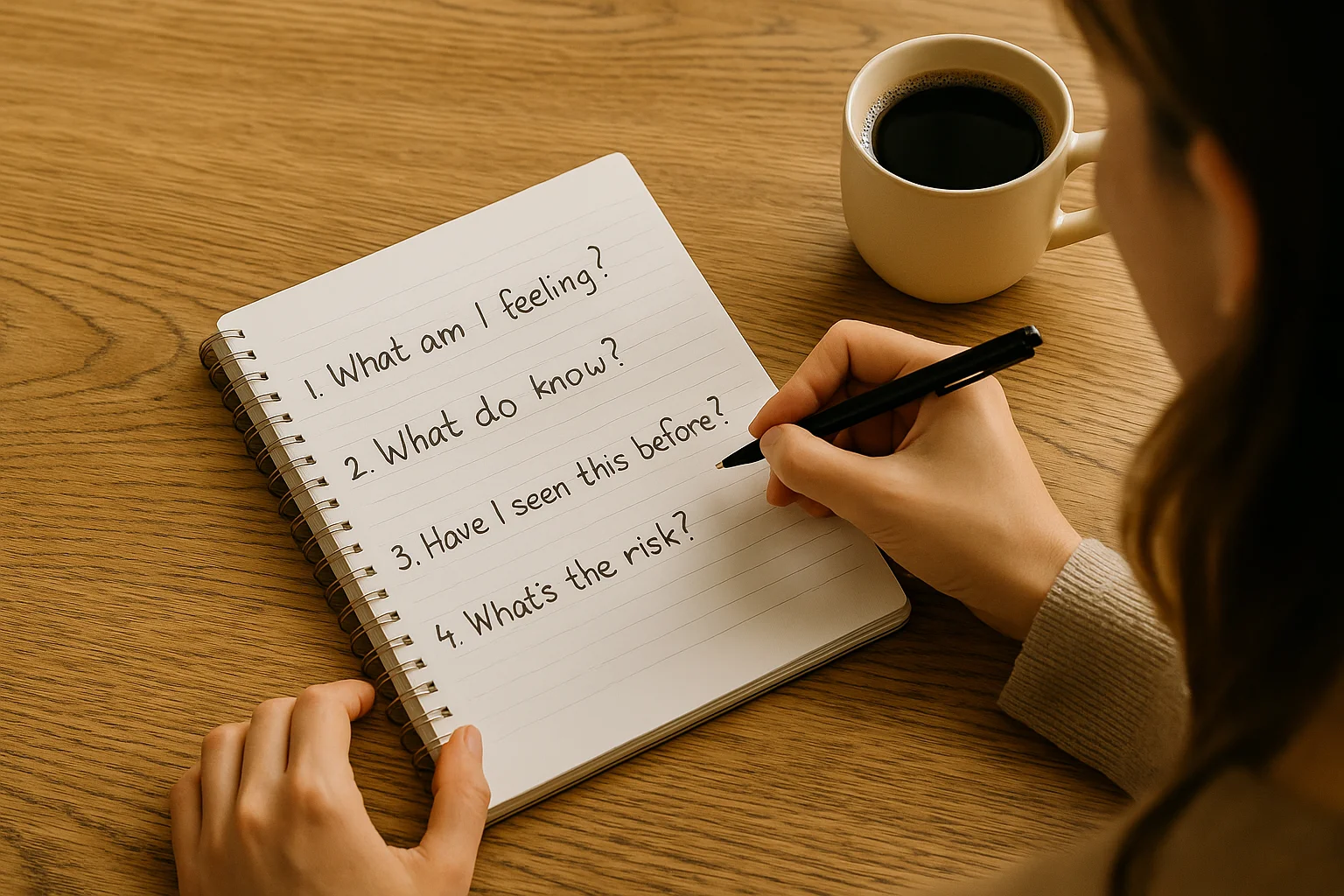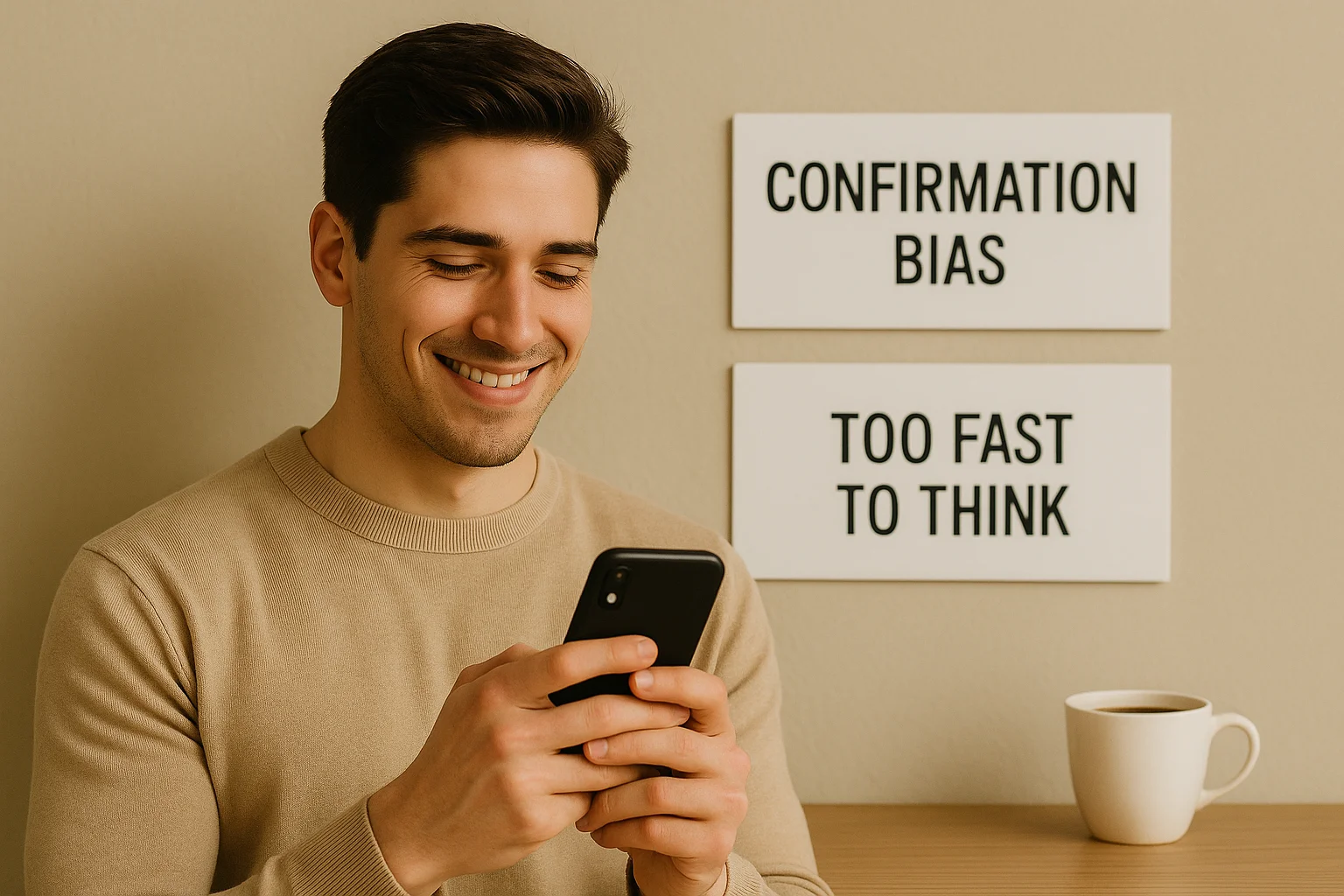.Some people take pride in their intuition — they call it a sixth sense and rely on it in everything from relationships to major life decisions. Others lean heavily on cold, hard facts, convinced that logic is the only path to the truth.
But the human brain is more nuanced than this simple split. As Nobel laureate Daniel Kahneman explained in his book Thinking, Fast and Slow, our minds operate through two systems — and both are necessary. Think of your brain like a car with two gears. One is fast, smooth, and automatic; the other is slower but far more precise — the trick is knowing when to shift gears.
And here's the kicker: even a simple logic game reveals this dual process. You may jump to an answer (System 1), only to realize after a few seconds of reflection that something doesn't add up — that’s System 2 kicking in.
So, today in this article will help you tell the difference between those gut reactions and reasoned responses — and more importantly, when to trust each one.
Two Thinking Systems: Fast and Slow
To make smarter choices, we first need to understand how our brain actually processes information. Kahneman’s theory reveals that we don’t think with a single unified voice — instead, we switch between two distinct systems. One runs on instinct and speed, the other on analysis and logic. They each serve a purpose but due to knowing which one is at play can help you to avoid poor decisions. So what exactly are these two systems — and how do they affect our daily thinking?
System 1 — Intuition
Speed: Lightning-fast and effortless
Basis: Emotions, instincts, past experiences
Best used when: Facing danger, making quick choices, or navigating familiar patterns
Downside: Prone to bias, assumptions, and overconfidence
System 2 — Logical Thinking
Speed: Deliberate and slow
Basis: Analysis, evidence, calculation
Best used when: Facing unfamiliar problems, making long-term decisions, or evaluating risk
Downside: Requires effort, time, and can be mentally exhausting
In the table below you can see a quick comparison:
Feature | System 1 (Intuition) | System 2 (Logic) |
Speed | Fast and automatic | Slow and deliberate |
Effort | Low effort | High effort |
Accuracy | Often right in familiar cases | More accurate in new situations |
Common Traps | Biases, stereotypes, overconfidence | Overthinking, analysis paralysis |
Imagine opening a quick puzzle in a logic game. Your first instinct is to pick the obvious answer — and you are confident. But then something feels off. You go back, think it through, and realize the real solution was hiding behind a trick. That’s the perfect illustration of System 1 vs. System 2.
Tip of the day: Always pause before you decide. If your answer or reaction comes too quickly, pause. Even 5 seconds of reflection can help you switch gears. Ask yourself:
Do I know this from experience, or am I assuming?
Is this situation new or familiar?
What would I tell someone else in my shoes?
Recognizing when you are in “auto-mode” is the first step toward smarter decisions.

When You Can Trust Your Intuition
We often speak about intuition as if it were magic — a mysterious gut feeling that just knows. But the truth is, intuition is rarely random. It is a compressed experience, when your brain recognizes patterns before your conscious mind catches up.
So when does intuition deserve your trust?
You can safely rely on intuition when:
The situation is familiar. You've seen it before, consciously or not. Your brain has already cataloged this pattern.
You've had feedback in the past. That means you've learned from previous attempts. Like a tennis player who just feels where the ball will land after years of play.
You're dealing with people, emotions, or creativity. Emotional intelligence often works faster than conscious reasoning in social settings.
Quick fact: Professional chess players make world-class moves in under a second — not because they are guessing, but because their brain has internalized thousands of board positions. That is trained intuition.
But beware — intuition has its blind spots. For example, in some cases intuition can lead you astray:
Intuitive Trap | Why It’s Risky |
Confirmation bias | You search for info that supports your gut, not truth |
Cognitive shortcuts | Stereotypes sneak in and cloud real judgment |
Overconfidence effect | “I just know I’m right” isn’t the same as being right |
Mini-check: Before you trust a gut decision, ask yourself: “Have I actually been in this exact situation before — and did I learn from it?” If the answer is no, logic may be the better guide.
When It’s Time to Slow Down and Think
Sometimes your intuition needs to step aside — especially when precision and stakes are high.
Use logical thinking when:
Numbers, analysis, or planning are involved, e.g., financial decisions, contracts, planning a move
You’ve never faced the problem before. New territory means the gut doesn’t know enough.
Mistakes are costly. Think: medical decisions, career shifts, or investments.
Pro tip: Even asking yourself “What do I actually know for sure?” starts the switch to System 2 — the analytical side of your brain.
Here is a quick table to clarify the split:
Use Logic When... | Use Intuition When... |
You’re analyzing data or calculating risk | You’re reading people or creating |
It’s a first-time or high-stakes decision | It’s familiar and you’ve had feedback |
Emotions may cloud the issue | Emotions help you connect or understand |
Mini-Insert: Mind Elevate as a Logic Trainer
Want to train your logical thinking muscle — just like you train your body at the gym?
Mind Elevate app offers short daily workouts for your brain. For example, logic mini-games like Runic Riddle or Symbol Riddle challenge you to pause, find patterns, and plan the next move — habits that translate into smarter real-world decisions.
Try this: Swap 5 minutes of social scrolling for a logical warm-up in Mind Elevate. It is ideal before bed or during a midday break — and yes, it works for both teens and adults.

How to Find the Balance: A Decision-Making Framework
So, should you go with your gut — or double-check the numbers? The truth is, good decision-making isn’t about choosing between intuition or logic. It’s about knowing when to lean on each, and how to switch gears when necessary.
Below you can see a simple mental algorithm to guide your thought process in real time.
Step-by-step guide for smarter decisions:
Step 1: What am I feeling right now?
A strong gut feeling isn’t always wrong — but it can be shaped by mood, fear, or bias. Identify the emotion first.
Step 2: What do I actually know?
Not assume, not hope — know. This is your cue to engage logical reasoning.
Step 3: Have I dealt with this before?
If yes, intuition might be valid — especially if your past experience ended well.
Step 4: What happens if I get this wrong?
This question calibrates risk. High stakes? Take more time. Low stakes? Trust the trained instinct.
Let Thought Be Fluid
Intuition is like a loyal dog: when trained, it leads you through foggy paths. And here logic can be your map: sometimes dry, sometimes hard to read — but essential to find your way.
Learning when to rely on one or the other doesn’t happen overnight. It’s a process of paying attention, trying things out, and adjusting along the way. Some days your gut will guide you well, others days stepping back and thinking things through will save you from a wrong turn — and that is what truly matters.
